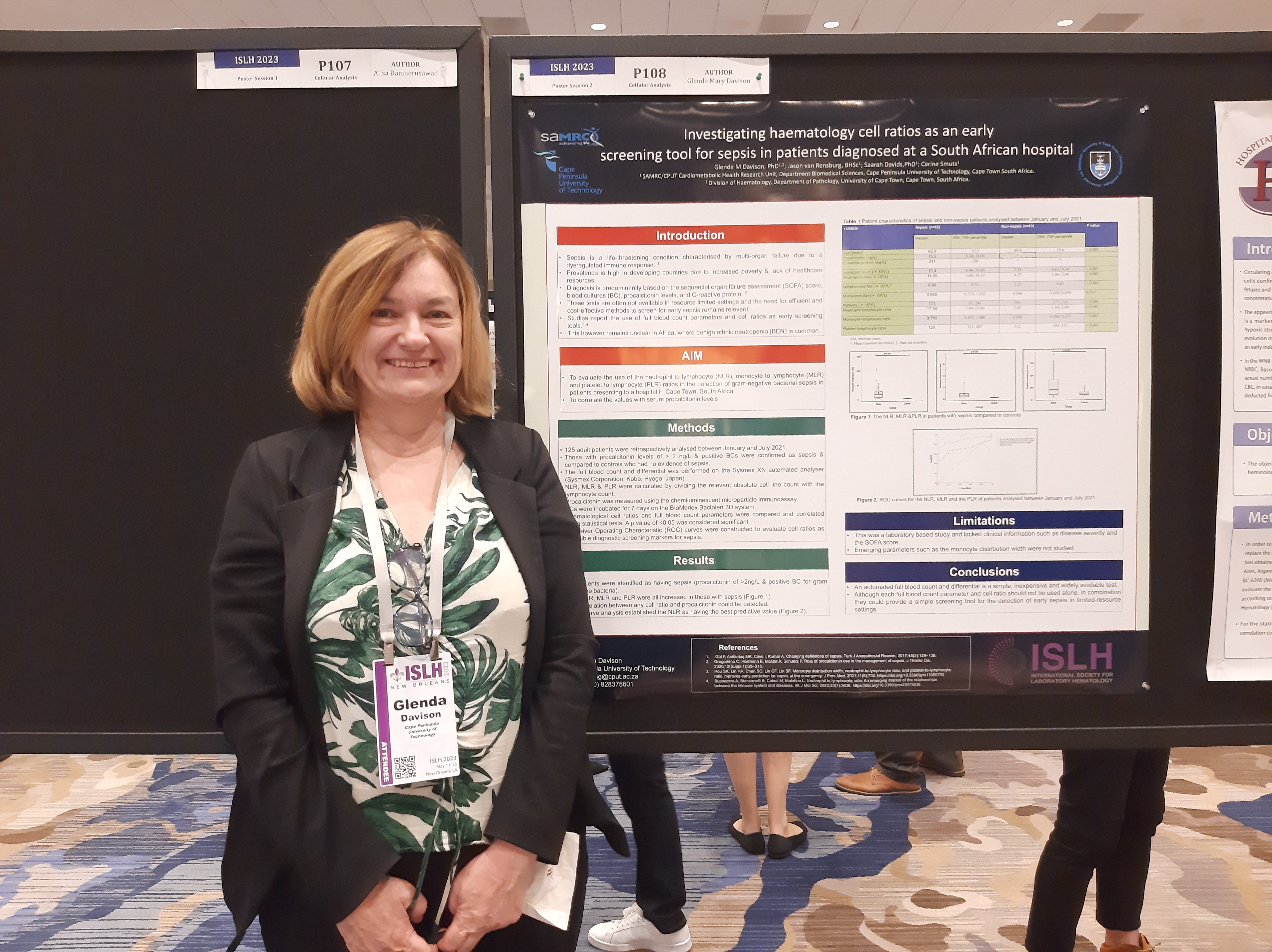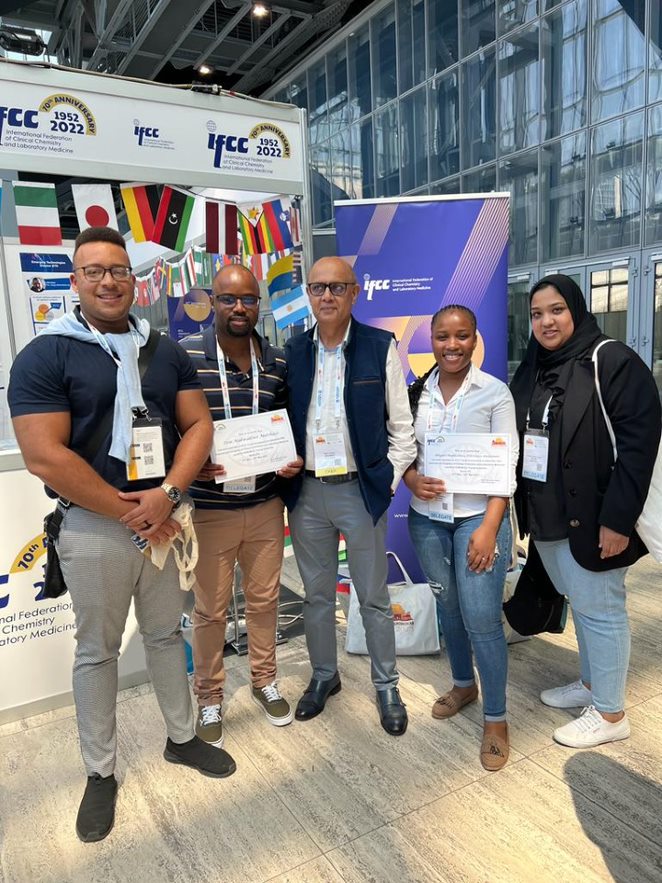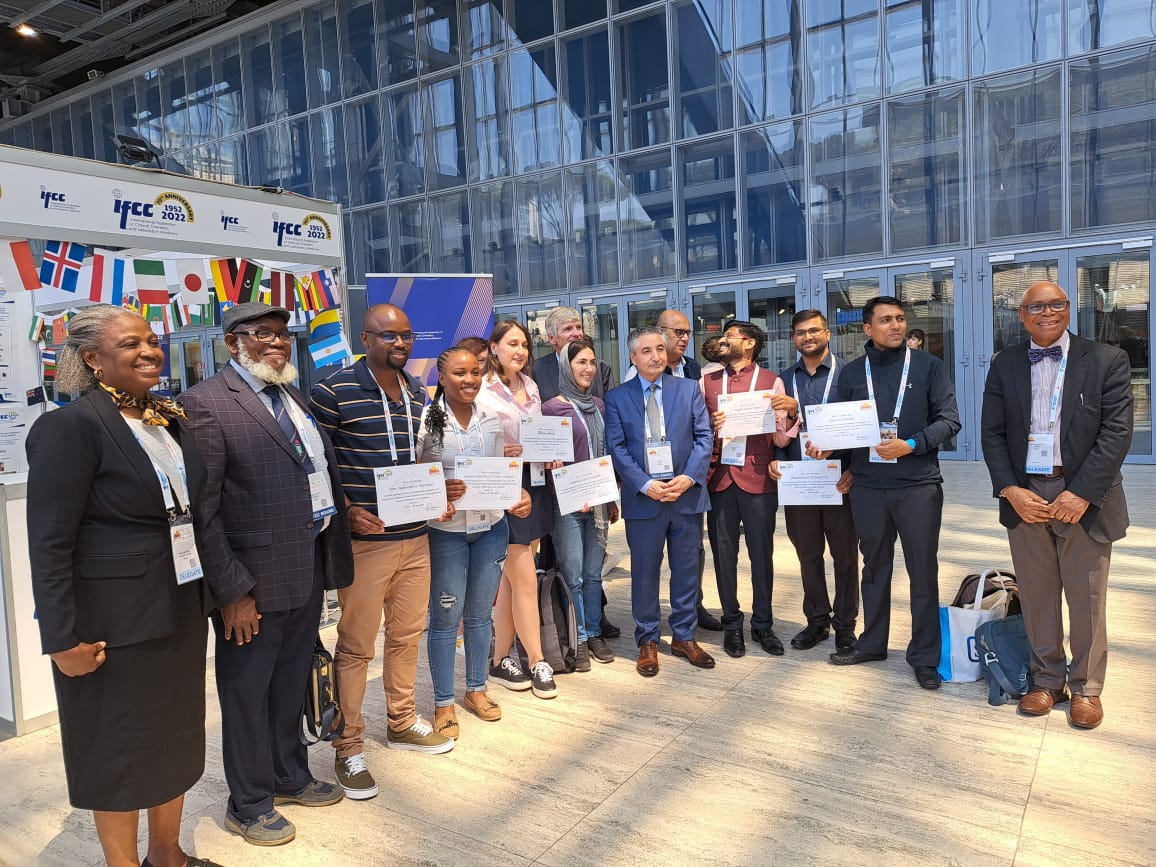As part of research and knowledge translation efforts, the SAMRC/CPUT Cardiometabolic Health Research Unit represented by Professor Glenda Davison attended the 36th International Symposium on Technological Innovations in Haematology. This is an annual congress organised by the International Society of Laboratory Haematology (ISLH). This year the conference was held in New Orleans in partnership with the North American Specialised Coagulation Laboratory Association (NASCOLA). The ISLH represents over 90 countries and the main aim of the conference is to disseminate information on laboratory innovations including genetics, genomics, artificial intelligence and the use of simple techniques in an innovative way to improve diagnosis. The speakers covered all topics in haematology including anaemia, malignancies, infection, haemostasis and thrombosis.

Presented at the conference was a poster which demonstrated the use of haematology cell ratios as a screening tool for sepsis in resource limited settings. Sepsis is a medical emergency caused by a dysfunctional immune response to pathogens and can lead to multi-organ failure if not detected and treated early. By calculating haematology cell ratios and constructing receiver operating characteristic curves, the results of the study demonstrated that the neutrophil to lymphocyte ratio performed the best in predicting sepsis and could be used as a screening tool.
Professor Glenda Davison on attending and presenting at the congress said, “For me this was a very special conference as I have had the honour of representing South Africa as a councillor on the ISLH board since 2017 and this year I completed my term of office as a board member.”
There were two cellular analysis sessions chaired by Prof Davison, one of these focussed on flow cytometry which is routinely used to analyse cells. The speakers included J. Paul Robinson from Purdue University who addressed the future of conventional flow cytometry. This was followed by two speakers Dr Gregory Behbehani and Professor Jonathan Brestoff who spoke about the future use of Mass Cytometry and Spectral flow cytometry. The second session addressed the relevance of conventional morphological analysis of cells as well as the use of applied machine learning to identify blood cells and to link this to algorithms to assist in diagnosis and monitoring of disease. “The analysis of blood cells using multiparameter flow cytometry is very relevant to our research unit as the interaction and activation of immune cells play an important role in the initiation of inflammation and the development of cardiovascular disease” added Prof Davison.
The conference also included sessions on several other relevant topics including coagulation, the analysis of platelets, iron metabolism, malignancy, the identification of abnormal haemoglobins, anticoagulant therapy and next generation sequencing.

Staff from the Unit also attended the International Federation of Clinical Chemistry and Laboratory Medicine (IFCC) Worldlab/Euromed congress which took place in Italy, Rome. This congress was the biggest one in 70 years, with over 11,500 delegates, exhibitors and guests from 118 countries. Four delegates from the unit attended the young researcher's forum which was a great opportunity for networking and future collaboration opportunities. Dr Don Matshazi (post doctoral fellow) and Ms. Abegail Tshivhase (PhD student) were awarded the IFCC travel grant and presented their work at the main congress as well as the young researchers forum. Dr Cecil Weale (post doctoral fellow) received the AFCC (African Federation of Clinical Chemistry) travel grant and Dr Saarah Davids was awarded funding from the CPUT Conference committee.
Titles of posters presented at the IFCC in Italy, Rome
- An exploratory study to assess the relationship between markers of iron metabolism and hyperglycaemia amongst women in Cape Town, South Africa: Dr Saarah Davids
- The association between altered miR-486-5p and miR-novel-chr1_40444 expression patterns and dysglycaemia in South African individuals: Dr Cecil Weale.
- Association between rs11605924, rs11708067, rs340874 and rs560887 single nucleotide polymorphisms and cardiometabolic diseases in a mixed ancestry South African population: Dr E Ndonwi
- Hhex and mtr1b gene polymorphisms associated with the risk of type 2 diabetes mellitus in a mixed ancestry South African urban population: Dr E Ndonwi
- The effect of resveratrol on hyperglycemia-related microRNAs in hepg2 cells: Ms A Tshivase
- Incidence and association of apoe and ldlr polymorphisms with cholesterol levels in a population from cape town, South Africa: Dr S Raghubeer
- MicroRNAs associated with chronic kidney disease in the general population and high-risk subgroups - a systematic review: Dr D Motshwari.

